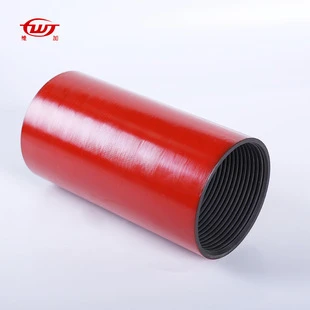- Afrikaans
- Albanian
- Amharic
- Arabic
- Armenian
- Azerbaijani
- Basque
- Belarusian
- Bengali
- Bosnian
- Bulgarian
- Catalan
- Cebuano
- Corsican
- Croatian
- Czech
- Danish
- Dutch
- English
- Esperanto
- Estonian
- Finnish
- French
- Frisian
- Galician
- Georgian
- German
- Greek
- Gujarati
- Haitian Creole
- hausa
- hawaiian
- Hebrew
- Hindi
- Miao
- Hungarian
- Icelandic
- igbo
- Indonesian
- irish
- Italian
- Japanese
- Javanese
- Kannada
- kazakh
- Khmer
- Rwandese
- Korean
- Kurdish
- Kyrgyz
- Lao
- Latin
- Latvian
- Lithuanian
- Luxembourgish
- Macedonian
- Malgashi
- Malay
- Malayalam
- Maltese
- Maori
- Marathi
- Mongolian
- Myanmar
- Nepali
- Norwegian
- Norwegian
- Occitan
- Pashto
- Persian
- Polish
- Portuguese
- Punjabi
- Romanian
- Russian
- Samoan
- Scottish Gaelic
- Serbian
- Sesotho
- Shona
- Sindhi
- Sinhala
- Slovak
- Slovenian
- Somali
- Spanish
- Sundanese
- Swahili
- Swedish
- Tagalog
- Tajik
- Tamil
- Tatar
- Telugu
- Thai
- Turkish
- Turkmen
- Ukrainian
- Urdu
- Uighur
- Uzbek
- Vietnamese
- Welsh
- Bantu
- Yiddish
- Yoruba
- Zulu
Understanding Tubing Crossovers for Enhanced Oil and Gas Extraction Techniques
Understanding Tubing Crossover A Critical Component in Oil and Gas Operations
In the dynamic world of oil and gas exploration and production, various technologies and methods are essential for efficient operations. One such component is tubing crossover, an integral part of the flow path that enables the transportation of fluids from the wellbore to the surface. This article explores the significance of tubing crossover, its design considerations, and its impact on the overall efficiency of production systems.
What is Tubing Crossover?
Tubing crossover refers to a configuration of pipes that allows the transition of fluid from one section of tubing to another, particularly when involving different diameters or types of tubing materials. It is often necessary in situations where production tubing needs to connect to various downhole tools or to facilitate the flow of fluids from multiple zones within a wellbore.
The device utilized for this transition is typically a crossover coupling, which is carefully engineered to handle high-pressure environments characteristic of downhole operations. These couplings are designed to provide a secure and leak-proof connection while minimizing pressure loses, which can be detrimental to production efficiency.
Importance of Tubing Crossover
1. Operational Efficiency One of the primary functions of tubing crossover is to enhance operational efficiency. By allowing fluids to flow seamlessly between different tubing sections or zones, operators can maintain optimal production levels. Any interruptions in flow can result in significant production losses, making effective design of crossover systems critical.
2. Fluid Management In many reservoirs, different zones produce fluids at varying rates. Tubing crossovers enable operators to manage these rates more effectively. By directing flow from high-yield zones, operators can enhance overall extraction processes, making better use of the available resources.
3. Pressure Regulation With varying depths and compositions of hydrocarbons, pressure regulation becomes crucial. Tubing crossover systems help mitigate pressure differentials that might endanger the integrity of the wellbore and reduce the risk of blowouts. By evenly distributing pressure across different sections, crossovers play a key role in ensuring well safety.
tubing crossover

4. Adaptability The oil and gas industry often operates in unpredictable environments. Tubing crossover designs can be adapted to meet specific needs, including accommodating changes in production conditions, incorporating extra monitoring systems, or fitting unconventional well configurations. This adaptability is essential for maintaining productivity in response to changing market demands or reservoir conditions.
Design Considerations
The design of tubing crossover systems must take into account various factors
- Material Selection Tubing materials must withstand corrosive environments, high pressures, and extreme temperatures. Common materials include carbon steel, stainless steel, and other specialized alloys that provide strength, durability, and corrosion resistance.
- Flow Dynamics Understanding fluid dynamics is crucial for designing an efficient crossover system. Engineers must calculate flow rates and pressure drops to ensure that the design minimizes turbulence and enhances fluid transport efficiency.
- Installation and Maintenance Crossover systems must also be easy to install and maintain. Accessibility for routine checks and repairs reduces operational downtime, which is critical for the economic viability of producing wells.
- Regulatory Compliance Finally, tubing crossover designs must adhere to strict industry regulations and standards to ensure safety and environmental protection. This includes considerations for emissions, waste management, and emergency response protocols.
Conclusion
In conclusion, tubing crossover is a vital component of the oil and gas extraction process, playing a significant role in improving efficiency, managing fluids, regulating pressure, and providing adaptability in a challenging industry. A well-designed tubing crossover system not only enhances production rates but also ensures the long-term sustainability of the resources being extracted. As the industry progresses towards more innovative and efficient methods of operation, the importance of effective tubing crossover systems cannot be understated. The future of oil and gas extraction will likely depend on such critical components to navigate the complexities of reservoir management and production optimization.
-
Tubing Pup Joints: Essential Components for Oil and Gas OperationsNewsJul.10,2025
-
Pup Joints: Essential Components for Reliable Drilling OperationsNewsJul.10,2025
-
Pipe Couplings: Connecting Your World EfficientlyNewsJul.10,2025
-
Mastering Oilfield Operations with Quality Tubing and CasingNewsJul.10,2025
-
High-Quality Casing Couplings for Every NeedNewsJul.10,2025
-
Boost Your Drilling Efficiency with Premium Crossover Tools & Seating NipplesNewsJul.10,2025







